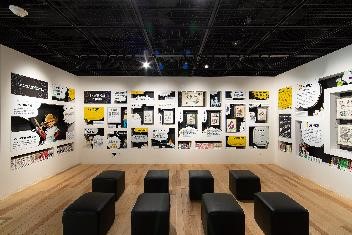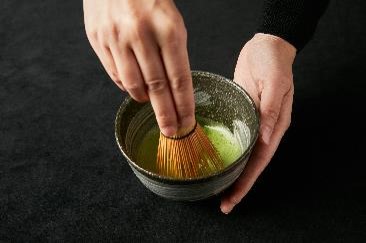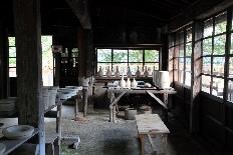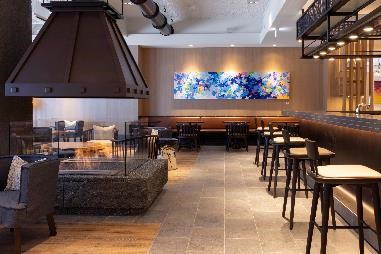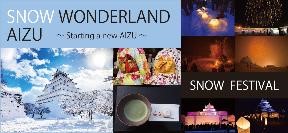
Japan National Tourism Organization (JNTO)
[JNTO] Off the Beaten Path: Discover the Secrets of Japan’s Regional Culture
2023.12.27
Press release
PDF ver.

Japan is made up of 47 prefectures and many of them are still waiting to be discovered by foreign travelers. Enjoy diverse tourism experiences focused on lesser-explored areas that connect visitors to the nation’s soul through regional cultural centers. From pop-culture facilities to heritage sites and ancient custodians of traditional customs where people can learn about Japanese history, art, and more, there’s never been a better time to venture into the unknown and explore the rich tapestry that is modern Japan. Here are some suggestions that’ll help you create an exciting, educational, off-the-beaten-path itinerary:
Regional Museums: Can’t-Miss Stops on a Regional Tour of Japan
Nozawa and the slopes of Hakuba are winter sports meccas, famous for some of the best fresh powder snow in Japan, attracting fans of skiing and snowboarding from all over the world. But this part of Nagano Prefecture has other things to offer as well. Located about a 1-hour bus ride from Nozawa there is the Nagano Prefectural Art Museum, opened in 1966. The museum showcases 4,600 pieces of modern and contemporary art by artists closely associated with Nagano, such as Kusama Yayoi, Ikeda Masuo, Ogiwara Rokuzan and others in various rotating exhibitions, each one following a different theme. As a “landscape museum,” the facility blends in with its surroundings and includes a waterside terrace that houses fog sculptures by the world-renowned artist Nakaya Fujiko.
In 1990, the museum added a gallery dedicated to the paintings of Higashiyama Kaii. The museum’s rooftop plaza and restaurant offer amazing views of the nearby Zenko-ji Temple, one of the most important places of worship in Japan with a history of some 1,400 years. Historians say the temple houses the first ever Buddhist statue brought over to Japan (from India) since the religion was introduced in the country in the 6th century.
Another fascinating destination is the Yokote Masuda Manga Museum, which is an excellent way to get closer to both Japanese pop culture and Akita Prefecture. Established in 1995 as Japan's first manga-themed art museum, it is currently the only museum in the country dedicated to the preservation and exhibition of original manga artwork. It safekeeps over 450,000 items by more than 180 artists, with a special focus on the works of Yaguchi Takao (known for his “Fisherman Sanpei” also known as “Tsurikichi Sanpei”). For the sake of preservation, only three or four works from 74 artists are exhibited at one time; the exhibitions change periodically.
Other artists exhibited in the manga museum include Kojima Goseki, illustrator of “Lone Wolf and Cub,” Saito Takao, creator of “Golgo 13” and Higashimura Akiko, known for “Princess Jellyfish.” There’s also a special corner for artists born in Akita Prefecture. For more Akita culture, visit Omonogawa Kido Goro Village, which houses traditional thatched houses dating back to the Edo Period (1603 – 1868) and the Taisho Period (1912 – 1926).
Walk Through Centuries of Japanese Traditions
Tea-drinking, an integral part of Japanese culture, traces its origins to Kyoto. After the monk Eisai brought tea plants to the country from China some 800 years ago, the first tea plantations appeared in Japan’s ancient capital, eventually spreading south to Uji where the moist soil and mild climate were ideal for tea cultivation. Today, visitors can still visit the city located just 20 minutes from the center of Kyoto and experience the complex world of Japanese tea, from Matcha (finely-ground green tea) to Sencha (whole leaves infused with hot water) and Gyokuro (a variety grown in the shade, not under the sun, giving it a richer flavor).
Visitors to Uji can taste all that history at Historical Park of Tea and Uji Town (Chazuna), together with exploring historical wonders such as Uji Byodo-in Temple and the National Treasures at its Museum Hoshokan. Descending from the tea plantations created when Shogun Ashikaga Yoshimitsu (1358 ‒ 1408) developed a taste for Uji tea, visitors now have a chance to discover tea fields like Ishitera, Dosenbo or Tayama Tsurugi, while enjoying firsthand tea experiences such as making Matcha in a stone mortar or Uji tea with a ceramic plate. Classes about tea ceremonies at the Fukujuen Uji Tea Workshop are also available, as are tea desserts including Matcha ice cream parfaits at Tsuen Chaya Tea House.
What Kyoto is to Japanese tea, the former Hizen Province is to Japanese pottery and porcelain. The traditions of the province live on in what is today the Saga and Nagasaki Prefectures area on the island of Kyushu where the discovery of ceramic stone in Arita around 400 years ago led to a boom in the production of porcelain. Since then, the pottery culture of Hizen Province has blossomed, branching into diverse styles and uses, from everyday tools to works of art, some of which have been displayed in European museums, influencing the continent’s artists since the 17th century. In the city of Imari, official kilns were set up to produce the highest quality products as presents for the Shogun (the country’s military leader and head of state for much of Japanese history.)
Ureshino City in Saga Prefecture is also a wonderful place to learn more about Japanese pottery. The city is home to the Shida-yaki Pottery Factory Museum, housed in a historic landmark that’s been certified as a Japan Heritage Site by the Agency of Cultural Affairs. Opened as the Marushi Seiji Factory established in 1914, it today presents and teaches the history and the process of manufacturing “Shida Ware” porcelain, known for its vivid blue colors set against a white background. The museum offers courses where visitors can make their own wares by forming them on a potter’s wheel or painting an original piece, which the kiln’s professional staff will fire and send to your address, even if you live abroad. In the spring and fall, visitors can get great bargains on Kyushu porcelain at a local pottery market in Ureshino City.
Japan Like You’ve Never Seen It Before
By exploring the Japan’s singular diversity of attractions through regional cultural facilities and historical sites, tourists can enjoy a one-of-a-kind trip that helps them experience unique sides of the country firsthand while also expanding their minds. And precious few journeys are more fascinating, memorable, and worthwhile.
Japan Tourism Topics
1. A Cozy Stay Surrounded by Powdery Snow on a Winter Sports Adventure at Nozo Hotel, Opening December 19, Hokkaido
The Nozo Hotel, newly opened on December 19th in Furano rests in the scenic wilderness of Hokkaido, making it the ideal base for adventurers visiting Furano Ski Resort to enjoy the pristine northern lands and top-quality powder snow. Part of the Parkwood Hotels chain, the new facility features a design that emphasizes light wood tones and minimalist decor. Its amenities include a large bath, a gym, ski lockers and a kids’ room, all of which cater to winter sports enthusiasts and other adventure-seekers throughout the seasons who are even interested in long-term stays to enjoy hiking, biking, and the famous lavender fields. The hotel restaurant offers a diverse menu featuring international cuisine, Sushi, Teppanyaki and more – showcasing seasonal ingredients from Furano and Biei – and an adjacent bar complements the dining experience with trendy mocktails, beers from Hokkaido, wines and world-class Sake.
NOZO HOTEL
2. Two New FUFU Hotels Work in Harmony to Invigorate Tourism and Culture, December 24, Karuizawa
Opening on December 24th, 2023, “FUFU Karuizawa, Wind in the Sunshine" and “FUFU Kyu-Karuizawa, Restful Forest" offerings provide serene resort experiences inspired by nature, allowing guests to bask in the warmth of the sun and take in the natural surroundings. The first-floor rooms of " FUFU Karuizawa " boast gorgeous views of a private garden and the majestic Mt. Asama. " FUFU Kyu-Karuizawa," set near Kumoba Pond, focuses on the tranquility of the surrounding forest with gentle, calming colors. Each guest room features a natural hot spring bath for peaceful, private soaking. Eco-conscious features that enhance the natural ambiance include fixtures made from recycled glass, reused ceramics and wooden furnishings sourced from Nagano Prefecture. Extraordinary dishes served at both sites are locally sourced, highlighting the unique richness of Karuizawa, one of Japan’s most historic resort areas.
FUFU Karuizawa-FUFU Kyu-Karuizawa
3. Nighttime Views and Culinary Delights at Kyushu’s New Marriott Hotel, January 16, Nagasaki
Kyushu’s first Marriott branded hotel, conveniently located next to JR Nagasaki Station, will open on January 16th, 2024. Reservations are now available. Featuring around seventy percent of 207 rooms with spacious balconies including 28 suites, the Nagasaki Marriott Hotel will welcome guests seeking a modern, uniquely comfortable stay with astonishing panoramic views of Nagasaki’s world-famous nightscape and its majestic seaside mountains, Mount Inasa and Nagasaki Port being especially impressive as the sun sets. The hotel’s dining area hosts three luxurious restaurants – all available to hotel guests and non-guests alike – and one of them, designed under the concept of “Treasure Cruising,” presents a fantastic view of the port city thanks to three-meter-tall, floor-to-ceiling glass windows.
Nagasaki Marriott Hotel
4. Discover the Samurai Culture and Seasonal Beauty of Aizu at Snow Wonderland, Fukushima
Aizu-Wakamatsu in Fukushimatransforms into a fantastical world when Tohoku is blanketed in sparkling snow and a large-scale event hosting a variety of attractions will celebrate the season this winter. Snow Wonderland Aizu offers plenty of chances for social-media enthusiasts to take exciting photos, try local cuisine and Sake and learn about the history of the Samurai who thrived in this region. Aizu-Wakamatsu proudly preserves Samurai heritage at the Aizu Clan Nisshinkan School and Bukeyashiki (Samurai residencies) where “the way of the Samurai” still flourishes. The symbol of Aizu-Wakamatsu, Tsurugajo Castle, will be the primary venue for the upcoming winter festival, which will include a spectacular nighttime illumination that paints the landmark structure in stunning light. Tailor-made for overseas visitors, the “Tsurugajo Special Night” featuring the “Aizu Gourmet, Sake & Geisha experience” event aims to highlight traditional Geisha culture and regional cuisine. They will also have a choice between an exclusive tea ceremony in the Rinkaku tea ceremony room while wearing elegant Kimono and a night tour in the castle with a guide. Snow Festival Guided Tour at Aizuwakamatsu City is available upon reservation.
Snow Wonderland Aizu
5. Cleansing for the New Year at the Mt. Wakakusa Yamayaki, January 27, Nara
The annual Yamayaki (mountain-burning) on Mt. Wakakusa symbolizes rich lore and spiritual unity found in Nara. Held annually on the fourth Saturday of January, the iconic ceremony is a joint effort of around 300 members of the Nara City Fire Brigade who ignite a grassland of about 33 hectares with torches all at once. It dates back to when many believed that spirits emerged from the Uguisuzuka tumulus, and that burning bonfires over the mountain would ward off such otherworldly entities. Before the ignition, a torch procession is held by Kasuga Taisha Shrine, Kofukuji Temple and Todaiji Temple to honor ancestors, protect Nara from fire and wish for global peace. The festival culminates in spectacular fireworks display that illuminates the night sky and signals the onset of early spring. Visitors can enjoy the splendid view from the grassy mountain, which is surrounded by World Heritage sites, and revel in nature during a unique culmination of Nara's heritage and unifying spirit.
Mt. Wakakusa Yamayaki
Notes:
・ The above details are correct as of the time of publication, and are subject to change.
If you’d like to download photos and videos of Japan's tourist attractions, please visit the Japan Online Media Center (JOMC): https://business.jnto.go.jp/
For media inquiries, including requests to use photographs, please contact the JNTO Press at media_Inquiry@jnto.go.jp




